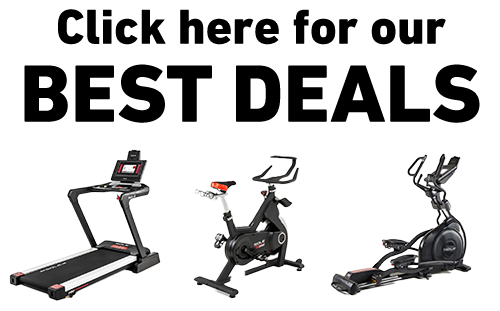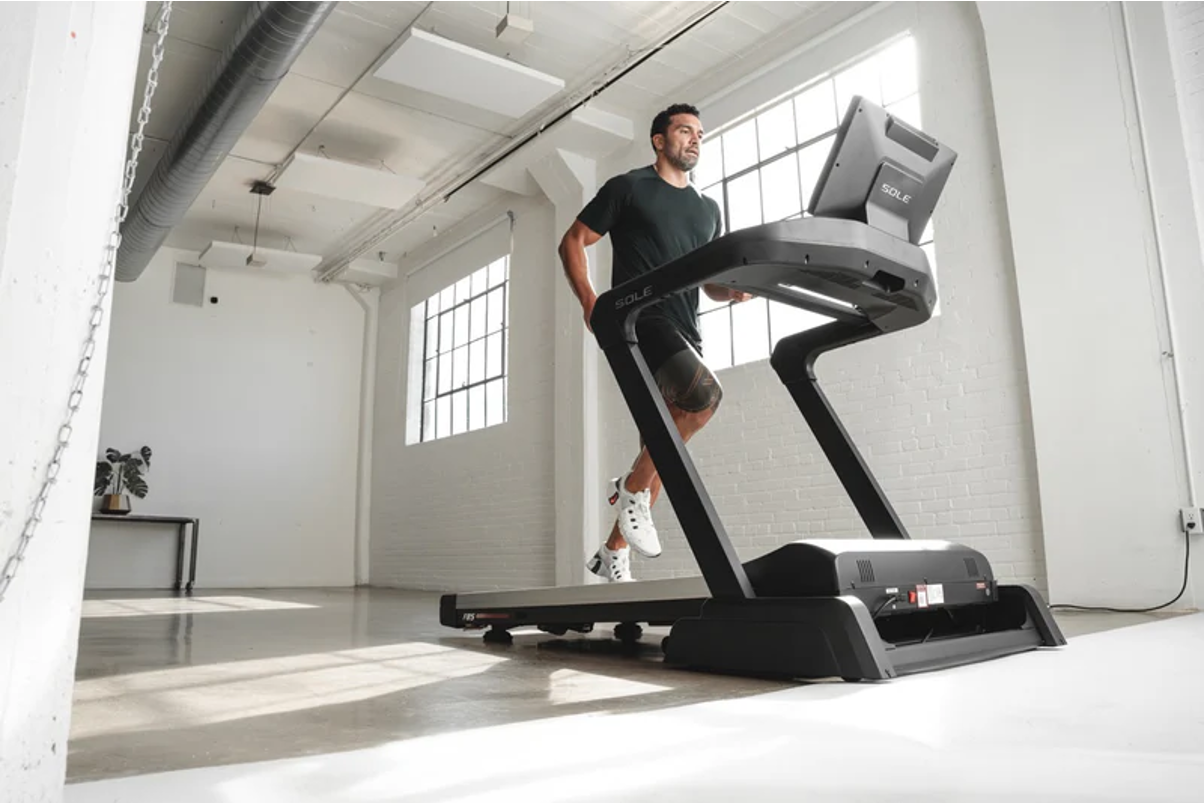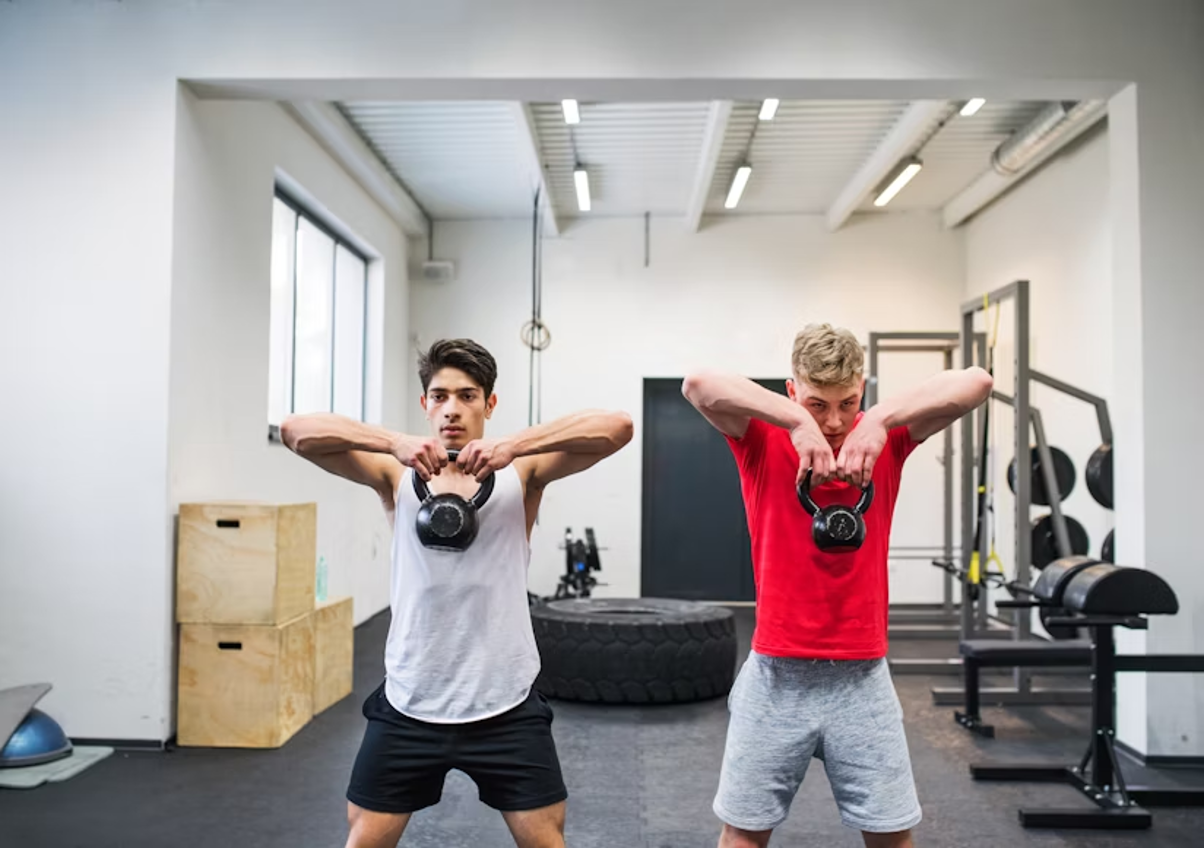Key Takeaways
- Proper triceps stretching after workouts can significantly reduce delayed onset muscle soreness appearing 24–48 hours post-training and improve recovery time.
- The overhead triceps stretch is the most effective starting point for post-workout recovery, targeting all three heads of the triceps brachii muscle.
- Stretching your triceps regularly increases range of motion and flexibility in elbow and shoulder joints, which enhances performance in various upper body exercises.
- Proper form during triceps stretches is crucial to prevent injury and maximize benefits.
- SOLE's Equipment Mat provides the essential cushioned foundation for seated and floor-based triceps stretches ensuring proper alignment, while the SW180 Adjustable Dumbbells and SW116 Weight Bench support the triceps training that necessitates these recovery stretches.
Your Triceps Need Strategic Post-Workout Recovery
Your triceps are burning after that killer arm workout. Now what? Proper recovery starts with effective stretching.
Post-workout triceps stretches are essential for maintaining muscle health, improving flexibility, and preparing your body for your next training session.
The triceps brachii is a powerful three-headed muscle that makes up about two-thirds of your upper arm mass, and when you've pushed it to its limits, targeted stretching becomes crucial for optimal recovery.
Triceps soreness often strikes hardest 24–48 hours after training, but implementing proper stretching techniques immediately after your workout can significantly reduce this delayed onset muscle soreness and improve your recovery timeline.
Understanding why triceps stretches are so important and the best ways to incorporate them into your post-workout routine separates athletes who maintain long-term arm health from those who develop chronic tightness and imbalances.
|
Premium Home Gym Equipment with Award-Winning Quality! Complete Your Home Gym:
Why Choose SOLE: ✓ Commercial-grade quality for home use 30-Day Money-Back Guarantee: Love it or return it, no questions asked. |
The Overhead Tricep Stretch: Your First Line of Relief

The overhead tricep stretch is the gold standard for post-workout triceps recovery, effectively targeting all three heads of the triceps muscle with particular emphasis on the long head.
The overhead tricep stretch is the gold standard for post-workout triceps recovery. This classic stretch effectively targets all three heads of the triceps muscle, with particular emphasis on the long head that runs along the back of your arm.
This stretch works by placing the triceps in a lengthened position while the shoulder is fully flexed. The position creates an optimal stretch through the entire muscle belly, from its origin at the scapula and humerus to its insertion at the elbow.
When performed correctly, you'll feel a distinct stretch along the back of your upper arm, indicating effective targeting of the triceps brachii.
Step-by-Step Technique
To perform the overhead tricep stretch correctly, start by standing tall or sitting on the SW116 Weight Bench with your feet hip-width apart and your core engaged. Raise your right arm straight up, then bend at the elbow to allow your hand to drop behind your head, aiming for between your shoulder blades.
Using your left hand, gently apply pressure to your right elbow, pulling it toward the center of your head until you feel a deep stretch in the back of your arm. Hold this position for 20–30 seconds while breathing deeply, then slowly release and repeat on the opposite side.
For maximum effectiveness, maintain proper alignment throughout the stretch. Your back should remain straight, shoulders relaxed and down away from your ears.
Avoid the common mistake of leaning to the side when applying pressure to your elbow—this reduces the stretch's effectiveness and may strain your shoulder. The goal is controlled, gentle pressure rather than forcing the stretch to its limit.
Cross-Body Tricep Stretch: Target Different Angles
What makes this stretch uniquely beneficial is its ability to create tension across different planes of movement. While the overhead stretch primarily works with gravity in a vertical plane, the cross-body approach creates horizontal tension that can access trigger points and tight areas that might otherwise be missed in your recovery routine.
Proper Execution Guide
Begin the cross-body tricep stretch in a standing position with your feet shoulder-width apart and knees slightly bent. Extend your right arm across your body at shoulder height, keeping the elbow straight but not locked.
Use your left hand to gently grasp your right arm just above the elbow, not on the joint itself. Slowly pull your right arm toward your chest until you feel a stretch in the back of your right arm, being careful not to rotate your torso as you hold the position.
The key to maximizing this stretch is maintaining proper shoulder position. Keep your shoulders pressed down away from your ears and avoid hiking up the shoulder of the arm being stretched.
This common compensation reduces the effectiveness of the stretch and can create unnecessary tension in your neck and upper back. Hold the position for 20–30 seconds while breathing normally, then switch to the other arm.
How to Maximize the Stretch
To get the most benefit from your cross-body tricep stretch, focus on your breathing pattern. Inhale deeply before initiating the stretch, then exhale slowly as you pull your arm across your body.
This breathing technique helps relax the muscle fibers and allows for a deeper stretch. For an enhanced effect, try gently increasing the pressure during each exhalation, which takes advantage of your body's natural relaxation response during the exhale phase.
Pay attention to the position of your elbow during this stretch. While it should remain relatively straight, avoid hyperextending or locking the joint, which can place unnecessary stress on the elbow.
The pulling force should come from your opposite hand placed above the elbow, not from torquing the joint itself. This subtle adjustment makes the stretch both safer and more effective for targeting the triceps muscle belly.
Experiment with the angle of the stretch by slightly adjusting the height of your arm. Bringing the arm slightly higher or lower can shift the focus to different portions of the triceps.
Towel or Band Tricep Stretch: Deep Tissue Relief

Using a prop like a towel or resistance band creates a mechanical advantage that helps you achieve optimal positioning without straining other joints or muscles.
The beauty of this stretch lies in its adjustability. By manipulating the tension on the towel or band, you can precisely control the intensity of the stretch, making it suitable for various levels of muscle tightness and flexibility.
This method also engages your body's proprioceptive feedback mechanisms, encouraging your nervous system to allow greater muscle relaxation—particularly valuable after heavy triceps work.
Setting Up With Your Equipment
For the towel tricep stretch, grab a small hand towel or a resistance band approximately 2–3 feet in length. Start by standing tall or sitting with good posture.
Hold one end of the towel or band in your right hand, then raise this arm straight overhead. Bend your right elbow so your right hand drops behind your head, between your shoulder blades. With your left hand, grasp the bottom end of the towel or band that's hanging down your back.
From this position, use your left hand to gently pull downward on the towel while your right hand maintains its grip. This creates resistance that deepens the stretch in your right triceps.
The advantage of this method is that you can instantly adjust the intensity by pulling more firmly or easing off on the towel. For those with limited shoulder mobility, this technique provides a way to achieve an effective triceps stretch without requiring extreme shoulder flexibility.
Use a longer towel or band if you have limited flexibility, ensuring the towel is non-slip or the band has sufficient texture for a secure grip. Start with light tension and gradually increase as muscles warm up.
Experiment with hand positioning to target different areas of the triceps, shifting your grip higher or lower on the towel to change the stretch angle.
Correct Form and Movement Pattern
The key to maximizing this stretch is maintaining control throughout the movement. Pull the towel or band with a slow, deliberate motion rather than jerky movements that could trigger your muscle's protective contraction reflex. Your breathing should be deep and rhythmic, with a focus on exhaling during moments of increased stretch intensity. This breathing pattern helps signal to your nervous system that the stretch is safe, allowing for greater muscle release.
Keep your neck in a neutral position during this stretch, avoiding the tendency to jut your chin forward or compress your cervical spine. Your core should remain engaged to support proper posture, particularly if you're performing the stretch standing up. For each arm, aim to hold the position for 20–30 seconds, allowing time for the muscle fibers to respond to the stretched position and begin to lengthen.
Support Proper Triceps Training and Recovery with SOLE

SOLE's Equipment Mat provides the essential foundation for stretching your triceps.
The SOLE Equipment Mat provides the essential cushioned foundation for all three triceps stretches: overhead, cross-body, and towel or band stretches.The superior cushioning supports proper spinal alignment during seated overhead stretches, preventing the lower back compensation that reduces effectiveness and creates strain.
The professional-grade thickness makes 20–30 second holds comfortable without the distraction of discomfort from hard flooring that can limit stretch duration. The generous 36.5" x 78" size accommodates various stretching positions including seated, kneeling, and lying variations for complete recovery flexibility.
The SW116 Weight Bench supports both proper triceps training that minimizes excessive tightness and effective recovery stretching.
The 9 adjustable positions enable optimal body positioning for close-grip bench presses targeting triceps without excessive shoulder stress, overhead triceps extensions with proper shoulder stability, and decline presses shifting emphasis while maintaining joint-friendly mechanics.
SW180 and SW155 Adjustable Dumbbells enable progressive triceps training through 16 weight options from 5–80 pounds supporting systematic strength development.
Use lighter settings (5–15 pounds) for warm-up extensions to prepare your muscles for working sets, medium weights (20–40 pounds) for overhead triceps extensions to build strength, and heavier loads (45–80 pounds) for close-grip pressing and advanced movements.
Check out SOLE's fitness collection today!
Frequently Asked Questions (FAQs)
How long should I hold each tricep stretch?
For optimal post-workout recovery, hold each tricep stretch for 20–30 seconds per side, repeating 2–3 times. This duration allows enough time for the golgi tendon organs to respond and signal the muscle to relax, known as autogenic inhibition. If you're dealing with particularly tight triceps after heavy training sessions, you might benefit from extending your holds to 45–60 seconds.
Can I stretch my triceps if they're already sore?
Yes, gentle stretching is beneficial for sore triceps and can actually accelerate recovery by increasing blood flow to the affected muscle tissue. The key word here is gentle—when stretching already sore muscles, reduce the intensity by about 20–30% compared to your normal stretching tension. Focus on slow, controlled movements and pay close attention to your breathing, using exhales to relax deeper into the stretch.
Should I stretch my triceps before working out too?
Pre-workout triceps stretching should differ from your post-workout approach. Before training, focus on dynamic stretching rather than static holds to prepare the muscles without reducing power output. Dynamic triceps stretches include arm circles, controlled triceps extensions with light weights, and arm swings. Save your deeper, prolonged static stretches for after your workout when the muscles are warm and recovery is the priority.
Can these stretches help with tennis elbow?
These triceps stretches can be a helpful component in managing tennis elbow (lateral epicondylitis) when performed correctly. The triceps insertion at the elbow is closely connected to the tissues affected by tennis elbow, and maintaining proper triceps flexibility can reduce pull on these tender areas. However, triceps stretching alone isn't a complete solution for tennis elbow—it should be part of a comprehensive approach that includes forearm extensor stretching, appropriate strengthening exercises, and possibly soft tissue work.
How does SOLE equipment support proper triceps training and post-workout recovery through stretching protocols?
The Equipment Mat is essential for triceps stretching protocols, offering superior cushioning for seated overhead stretches protecting your tailbone and sitting bones during the 20–30 second holds required for optimal muscle fiber relaxation. The professional-grade thickness supports proper spinal alignment during seated variations preventing the lower back compensation that reduces stretch effectiveness.
The SW116 Weight Bench supports both proper triceps training form and effective recovery stretching. The SW180 Adjustable Dumbbells enable progressive triceps training through 16 weight options from 5–80 pounds, supporting everything from warm-up sets with 5–10 pounds to heavy overhead extensions with 40–60 pounds.




Leave a comment
This site is protected by hCaptcha and the hCaptcha Privacy Policy and Terms of Service apply.